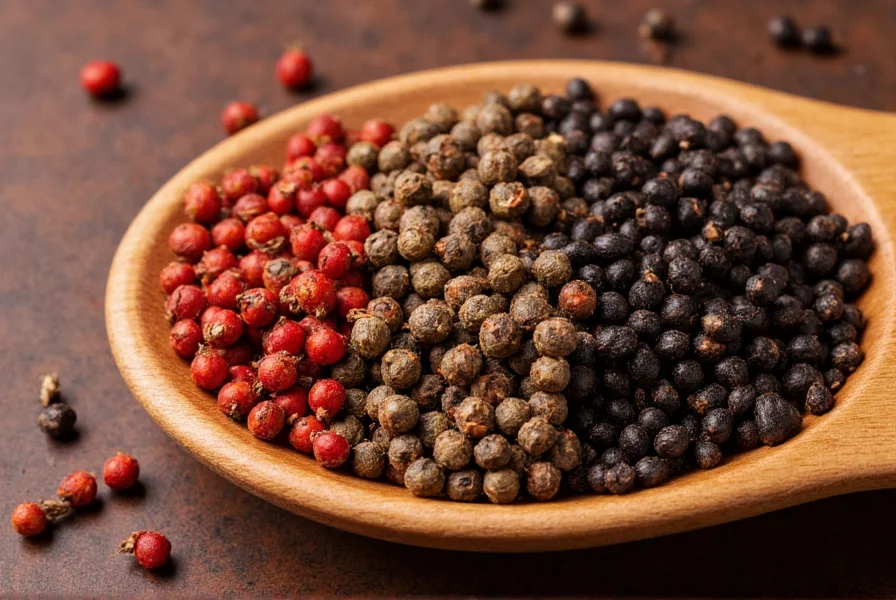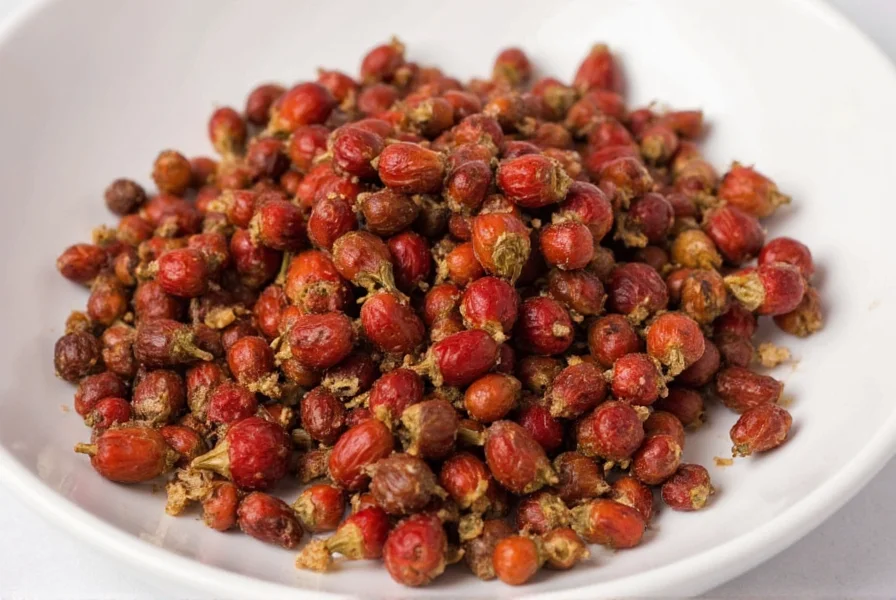The best immediate replacements for Sichuan pepper are sansho pepper (for similar tingling sensation), a blend of black pepper and star anise (for flavor profile), or Tellicherry pepper (for bold heat without the numbing effect). Each substitute works differently depending on your recipe—sansho offers the closest sensory experience while black pepper combinations provide accessible alternatives for most Western kitchens.
When your recipe calls for Sichuan pepper but your spice rack comes up empty, knowing the right substitute can save your dish. This unique spice—technically a berry from the Zanthoxylum genus, not a true pepper—delivers that distinctive tingling, mouth-numbing sensation (ma la) essential to authentic Sichuan cuisine. Finding an effective Sichuan pepper replacement requires understanding both its citrusy aroma and electric tingle, which no single substitute perfectly replicates.
Why Sichuan Pepper Is Unique
Sichuan pepper's magic comes from hydroxy-alpha sanshool, the compound responsible for its signature buzzing sensation. Unlike chili heat that builds slowly, this tingling effect hits immediately and lingers. The best Sichuan peppercorn replacement must address both flavor (citrus, floral notes) and sensation (the numbing quality). Most substitutes focus on one aspect while compromising the other.

Top 5 Sichuan Pepper Substitutes Ranked
| Substitute | Flavor Match | Sensation Match | Best For | Replacement Ratio |
|---|---|---|---|---|
| Sansho pepper | ★★★★☆ | ★★★★★ | Japanese dishes, delicate sauces | 1:1 |
| Black pepper + star anise (3:1) | ★★★☆☆ | ★☆☆☆☆ | Stir-fries, marinades | 1.5 tsp blend per 1 tsp Sichuan |
| Tellicherry pepper | ★★★☆☆ | ★☆☆☆☆ | Robust dishes needing heat | ¾ tsp per 1 tsp Sichuan |
| Asafoetida + black pepper | ★★☆☆☆ | ★☆☆☆☆ | Vegan/vegetarian dishes | ¼ tsp asafoetida + 1 tsp black pepper |
| Coriander seed (toasted) | ★☆☆☆☆ | ☆☆☆☆☆ | Emergency use only | 1.5 tsp per 1 tsp Sichuan |
Detailed Substitute Analysis
Sansho Pepper: The Closest Relative
Native to Japan, sansho pepper (Zanthoxylum piperitum) delivers 80% of Sichuan pepper's numbing effect with slightly more citrus notes. This Sichuan peppercorn replacement works beautifully in Japanese-inspired dishes or when authenticity matters most. Use it at a 1:1 ratio, but note that sansho's tingling sensation fades faster than Sichuan pepper's prolonged buzz. Find it in Asian grocery stores labeled as Japanese prickly ash.
Black Pepper and Star Anise Blend: The Accessible Option
For cooks needing a Sichuan pepper substitute with pantry staples, combine 3 parts freshly ground black pepper with 1 part finely ground star anise. The black pepper provides heat while star anise contributes the floral-citrus notes. This combination works particularly well as a Sichuan peppercorn replacement in Chinese five-spice dishes. Add the blend early in cooking to mellow the star anise's licorice notes—unlike true Sichuan pepper which you'd add near the end.

Tellicherry Pepper: For Bold Heat Without Numbing
When you need heat without the tingling sensation—perhaps serving to guests unfamiliar with ma la—premium Tellicherry peppercorns offer complex citrus notes similar to Sichuan pepper. Use ¾ teaspoon for every teaspoon of Sichuan pepper called for. This Sichuan pepper replacement shines in black pepper beef recipes or when making mapo tofu for Western palates. Toast the peppercorns lightly before grinding to enhance their floral notes.
Critical Usage Tips for Substitutes
Understanding when and how to use your Sichuan pepper replacement makes all the difference:
- Timing matters: Unlike Sichuan pepper which you add late in cooking to preserve its volatile oils, black pepper substitutes benefit from earlier addition to mellow harsh notes
- Grind fresh: Pre-ground substitutes lose potency quickly—always grind your Sichuan pepper alternative just before use
- Adjust for dish type: Use sansho for delicate broths, black pepper blends for stir-fries, and Tellicherry for meat-heavy dishes
- Balance with chili: Most substitutes lack Sichuan pepper's heat dimension—compensate with ¼ teaspoon cayenne per teaspoon of substitute
What NOT to Use as Sichuan Pepper Substitutes
Avoid these common but ineffective Sichuan pepper replacement attempts:
- Chili flakes alone: Provides heat but zero numbing sensation or citrus notes
- White pepper: Too medicinal and lacks floral complexity
- Szechuan seasoning blends: Often contain MSG and artificial flavors that alter dish authenticity
- Peppercorn medleys: The non-Sichuan components dominate the flavor profile
Where to Source Real Sichuan Pepper
While substitutes work in a pinch, nothing beats authentic Sichuan pepper. Look for:
- Hongbei market peppercorns: The gold standard with intense aroma (available at specialty Asian markets)
- Red Sichuan peppercorns: More floral than the green variety, better for most Western recipes
- Vacuum-sealed packages: Preserves volatile oils better than bulk bins
Store in an airtight container away from light—properly stored, they maintain potency for 6-8 months. Toast lightly in a dry pan before use to maximize flavor in your Sichuan peppercorn replacement attempts.
FAQ: Sichuan Pepper Substitution Questions
Can I use regular black pepper as a Sichuan pepper substitute?
Yes, but with limitations. Black pepper provides heat without the signature numbing sensation. For better results, combine 3 parts black pepper with 1 part ground star anise to approximate Sichuan pepper's citrus notes. Use 1.5 teaspoons of this blend per teaspoon of Sichuan pepper called for in recipes.
What's the difference between green and red Sichuan peppercorns for substitution?
Green Sichuan peppercorns deliver a more intense numbing sensation with lemony notes, while red varieties offer warmer, woodier flavors. When substituting, use green Sichuan pepper for seafood dishes and red for meat recipes. Most substitutes work better for red Sichuan pepper applications since green's unique citrus profile is harder to replicate.
How do I adjust recipes when using Sichuan pepper substitutes?
Add black pepper-based substitutes earlier in cooking to mellow harsh notes, unlike authentic Sichuan pepper which you'd add near the end. Reduce other heat elements by 25% since most substitutes lack Sichuan pepper's complex flavor balance. For every teaspoon of Sichuan pepper replaced, add ¼ teaspoon cayenne to compensate for missing heat dimension.
Why does my Sichuan pepper substitute taste bitter?
Bitterness usually comes from over-toasting substitutes or using pre-ground versions. Always toast whole peppercorns gently just until fragrant (30-60 seconds), then grind immediately. Pre-ground substitutes oxidize quickly, developing bitter compounds. For best results with Sichuan peppercorn replacement, use freshly ground whole spices and add them later in the cooking process.
Can I make a homemade Sichuan pepper substitute without special ingredients?
Yes—combine equal parts freshly ground black pepper and coriander seed, then add a pinch of ground cinnamon. While this won't replicate the numbing sensation, it approximates Sichuan pepper's citrus-wood flavor profile using common pantry items. Use 1.5 teaspoons of this blend per teaspoon of Sichuan pepper required, and add it during the last 5 minutes of cooking for best results as a Sichuan pepper replacement.











 浙公网安备
33010002000092号
浙公网安备
33010002000092号 浙B2-20120091-4
浙B2-20120091-4